
A few days ago, the author had the privilege of a close look at Sharp 8K resolution TV, as the most cutting-edge products, Sharp 8K resolution TV in the picture clarity, color gamut coverage, brightness uniformity, contrast and image processing engine Aspects have been optimized and innovated.
As a heavyweight product in the industry, Sharp's 8K-definition TV adopts Sharp's “Next-Generation, Four-Color Technology†LCD panel. The unique pixel structure of “Red Green Blue and Yellow†enables the screen to display 8K resolution. It can be said that its appearance brought the definition of television to a completely new height, while the shocking sound quality and the new look also made Sharp 8K resolution television look good.
This is Sharp's 8K-definition TV engineering prototype, but through testing, I can clearly feel the difference between the quality of the product and the quality of the mainstream 4K TV. Then, the next time, the author will introduce Sharp 8K definition TV to the audience through several aspects such as technical introduction, quality comparison, function experience and appearance design.
Sharp 8K resolution TV technology analysis
The core technology of Sharp 8K resolution TV lies in the new four-color panel technology. Users who understand Sharp TV know that the so-called "four-color technology" refers to a new increase in the three primary colors of RGB (red, green, and blue) in traditional LCD panels. One yellow. By introducing an independent yellow, four-color panel technology allows the LCD panel to achieve a wider color gamut. Using this technology, LCD TVs can more vividly reproduce yellow, gold colors that are difficult to reproduce realistically using traditional RGB three-primary technologies.
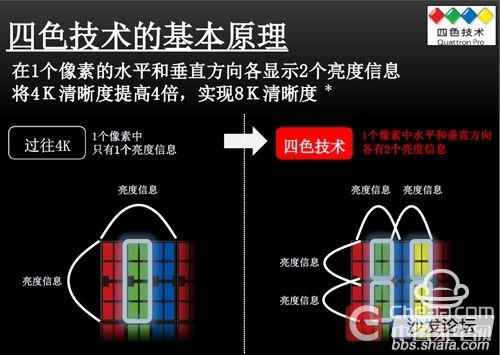
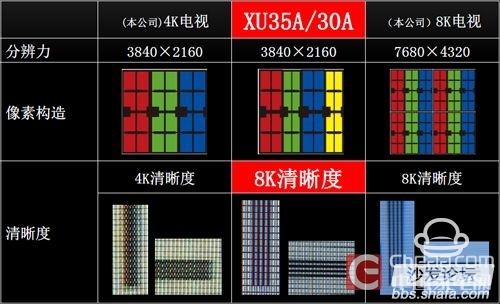
In addition, human eyes are highly visually sensitive to colors such as green or yellow. According to the physiological characteristics of the human eye, the traditional three-primary panel, the luminance information that can be felt in one pixel is only green, and one pixel is one definition. The four-color technology adds yellow to the traditional three primary colors, and realizes two luminance information of green and yellow in one pixel, the resolution in the horizontal direction is increased by 2 times, and the upper and lower parts of one pixel are separately driven to achieve vertical There are also 2 brightness information in the direction, and the resolution is increased by 2 times. Therefore, there are 4 luminance information in 1 pixel, 4K resolution is increased by 4 times, so as to reach the 8K resolution level.

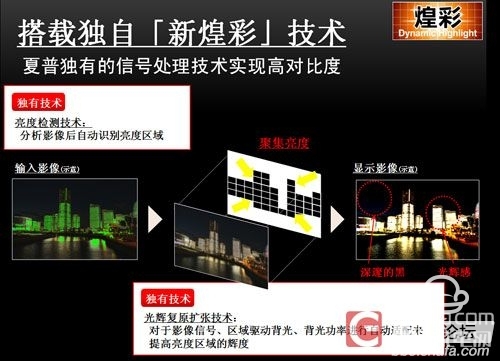
It is worth noting that Sharp's 8K-definition TV is equipped with the "new color technology," which automatically adjusts the brightness of the backlight in each area based on the light and shade information in the image, and combines the dynamic image processing technology to make the bright part even more brilliant and colorful. The dark part is deeper and deeper. The LCD TV equipped with “New Color Technology†can achieve more realistic brightness, richer full color expression, and the brightness of the bright part to maximize the true brilliance of a luminous object. At the same time, energy efficiency is improved by increasing the luminous efficiency of the backlight.

In addition, Sharp's 8K-definition TV is certified by the Tomlinson Holman Experiment thanks to its outstanding audio and video performance. Unlike THX certification and international standards, THX does not have a tolerance. It has only one minimum requirement. It must be passed in order to qualify and eliminate human interference. In addition, THX's surround sound effects are further enhanced over the current common Dolby Pro-Logic surround system.
8K definition TV and 4K TV contrast
In order to let everyone see the difference between 8K resolution and 4K resolution, in the next time, let's take a look at the contrast between two different resolutions.
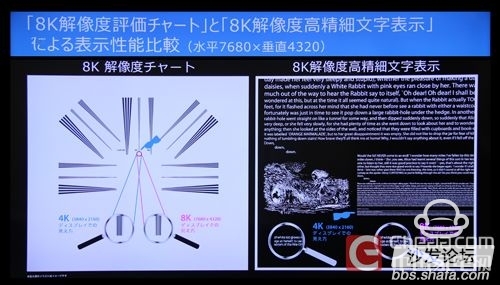
In order to ensure the objective and fairness of the comparison test, we selected the 4K TV, also from Sharp, as a comparison prototype.
So how do they perform? Please follow me to see this group of comparative pictures.

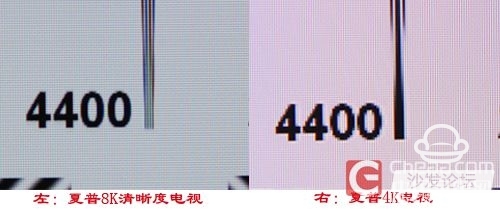
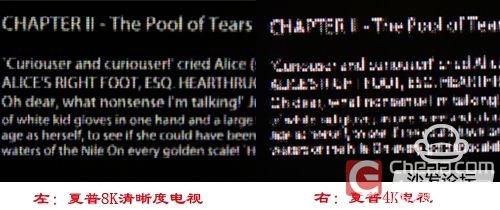
It is not difficult to see through the comparison of the real shots that the left side of the picture can clearly see 4 8K lines, while the right side can only see 2 lines of 8K lines. Another example is the English letters in the figure above. You can see each letter on the left, and you can hardly see any one letter on the right side.
After seeing the details of the comparison test chart, let us look at the actual performance of the two products on the screen.


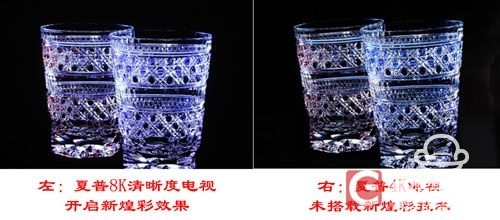
The above three groups are the comparisons of the effects of the Sharp 8K resolution TV equipped with the new Huangcai technology and the 4K TV without the new Huangcai technology.
It can be clearly seen that Sharp's 8K resolution TV LCD-80XU35A, which uses the new color technology, has a significantly higher picture contrast, a darker, darker, and brighter part. This is due to the fact that the core of the new Huangcai technology is to analyze the structure of the screen and reduce the darkness of the shadows through the localized light control technology to enhance the light effect. The high-contrast performance of the LCD panel itself can not show the metallic luster and the bright sparkling picture, which can be expressed through the new color technology.
Next, let's look at the contrast between the two products by looking at more pictures and videos.
The following pictures are all live shots, but due to the effects of shooting equipment, color differences of different monitors, etc., the presented results are still different from the actual viewing on the spot, so they are for reference only.
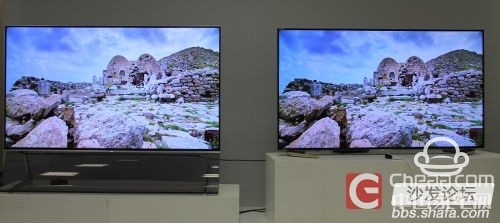

In addition to the obvious differences in the definition, in fact the color of the picture, Sharp 8K resolution TV is also superior to the traditional 4K TV. From the comparison of real shots, it can be seen that the brightness of the TV screen on the left is higher and the contrast and the leveling are more distinct. This result is inseparable from the optimization of the television itself.
Edit Comment: On the screen color, sharpness, depth of field effects and light and shade contrast, Sharp 8K resolution TV is far better than the contrast of Sharp 4K TV, which shows that in the performance of the screen, Sharp 8K resolution TV The visual impact on the user is stronger and the picture is more realistic.
Real test: 8K resolution TV dominates
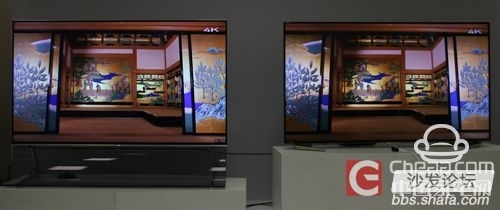
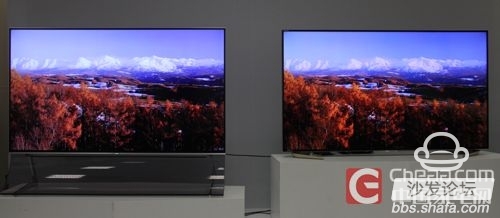
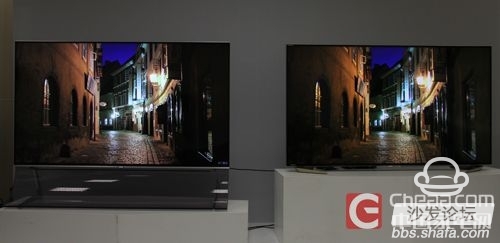
Through actual comparison, it can be found that the performance of the two products on the screen picture and video is similar to the results tested on the previous page, such as the details of the screen, brightness, color, layering, and depth of field effects.
In general, Sharp's 8K-definition TV looks more transparent and more colorful. Another example is the above shot map, Sharp 8K definition TV can show the details of the picture in front of the user, although the 4K TV can also show its subtle changes in the picture, but compared with the former there is still a certain gap.

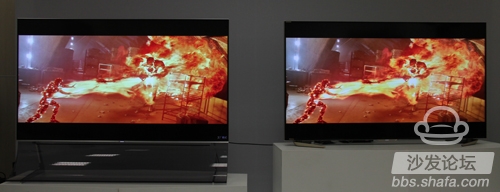
Through the comparison of real shots, it can be seen that the overall effect of the two high-end television screens is very good, the picture layering and color performance are more accurate, have their own style, and the quality of the picture is difficult to distinguish in the normal viewing distance. Color aspects. In the green and yellow scenes, Sharp's 8K-definition TV has a great advantage. The yellow details are prominent and the performance level is full; the green is transparent and natural.
Sharp 8K definition TV appearance introduction
Although there are obvious advantages in display technology, Sharp's new 8K-definition TV does not ignore the appearance of the product. After all, as a entertainment terminal in the home, the “facade†is still very important.

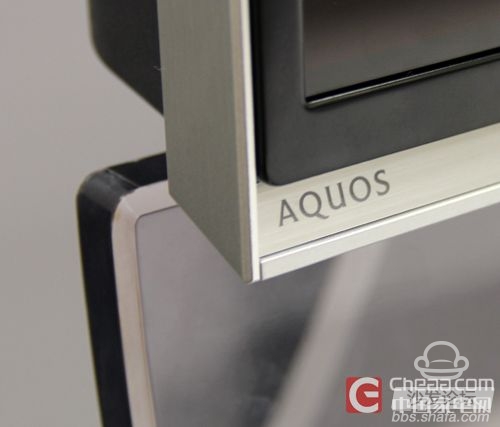
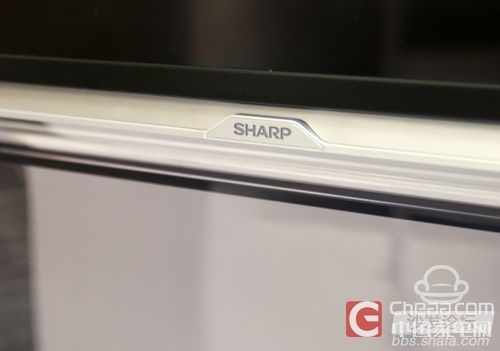
As can be seen from the above real shot diagram, the Sharp 8K resolution TV adopts a very mainstream ultra-narrow frame design nowadays. Such a design can maximally enhance the telepresence and visual impact of the screen. In addition, the addition of an all-black frame blends into the TV panel. At first glance, the “borderless†design makes the overall feel of the picture stronger.



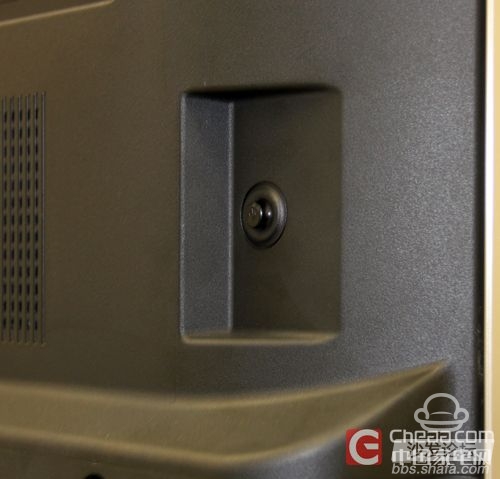
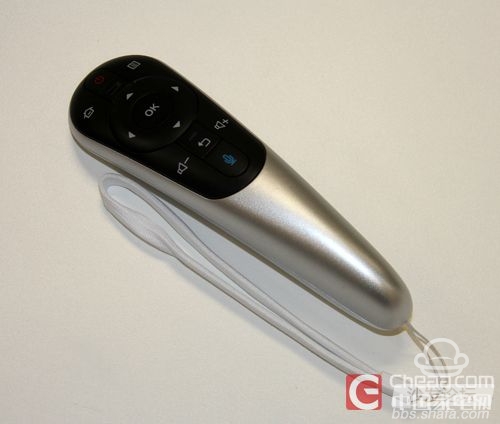
Sharp 8K definition TV basic test
As the current highest-end product, the performance of the product is particularly important. In the previous article, we have already given you a picture quality gap between Sharp 8K-definition TV and Sharp 4K TV. But I think we all want to know the actual performance of Sharp's 8K-definition TV in its own performance. Then in the next test session, we conduct a comprehensive and detailed test on the performance of the product to see if it is in the picture quality. On the other hand, does it continue Sharp TV’s past “descent�
Affected by monitor settings, camera parameters, and performance, real shots are for reference only


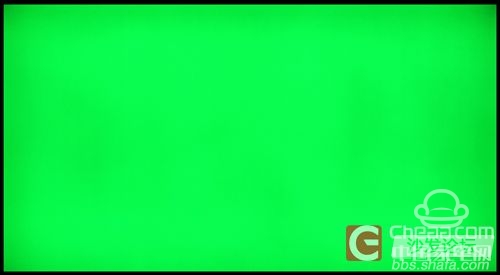
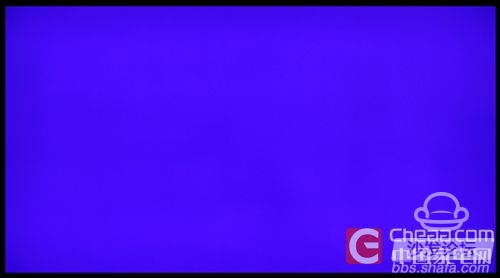


Sharp 8K resolution TV 4K test
At the current stage, 4K sources are very limited, not to mention 8K sources, so in the next section, let's take a look at how the Sharp 8K resolution TV displays 4K images.
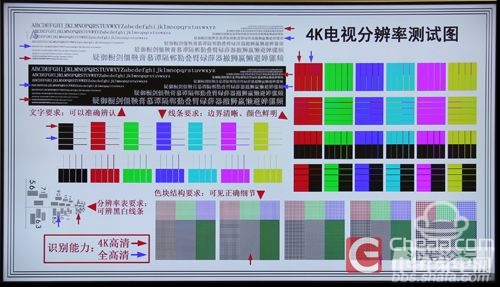
In addition to enhancing the detailed capture of the original image, users can enjoy the visual impact of full HD 3D in the true sense when watching 3D videos.


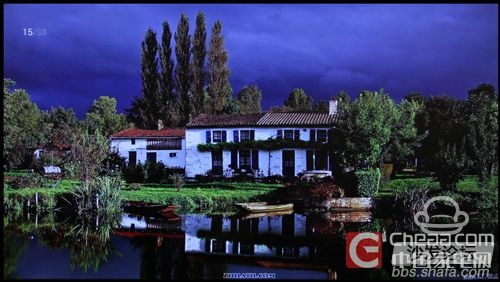



Sharp 8K resolution TV 2K test



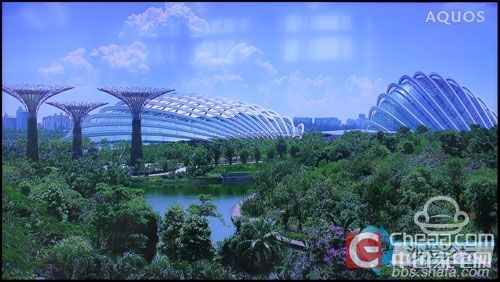

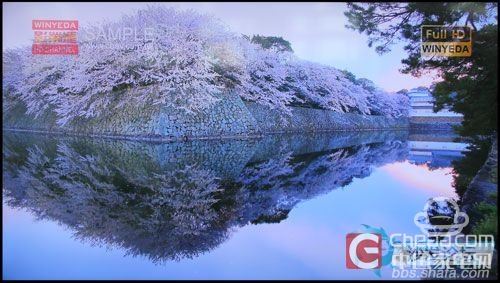

Sharp 8K definition TV function experience
Nowadays, diversified development has become the mainstream direction of the TV industry. Regardless of whether it is positioning or not, TVs appearing in the market almost all have achieved improvement and breakthrough in intelligence. As the most representative product at the moment, Sharp 8K resolution TV also does not meet the performance of the product in terms of performance, powerful intelligent control platform is to meet the user's daily needs. Below, we come together to experience its powerful entertainment features.

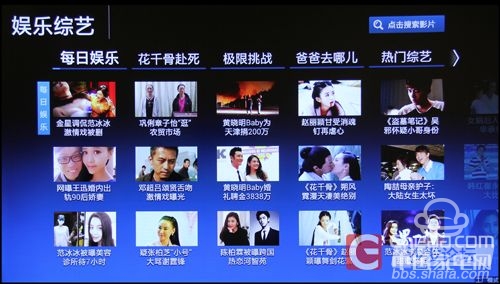

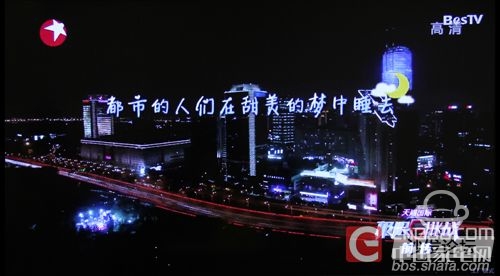
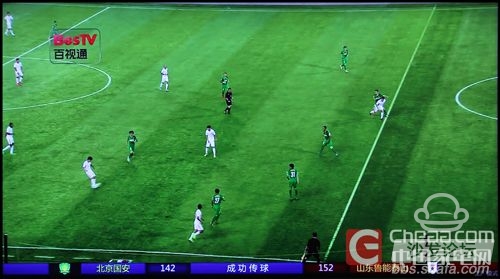


Sharp 8K definition TV evaluation summary
Through detailed tests, the strength of small TVs in the liquid crystal display technology has once again been demonstrated. The addition of new technologies such as Huangcai technology and a new generation of four-color technology has enabled a more detailed and clear picture quality, and the overall color performance is brighter and brighter. From the actual comparison, we can clearly see Sharp 8K resolution TV in the picture details far better than the current mainstream high-end 4K TV.
Advantage:
A new generation of four-color technology: The unique pixel structure of “Red Green Blue Yellow†enables the screen to display 8K resolution
X8-MEP Professional Image Processing Engine: The World's First Image Enhancement Processing Engine for Enhancing Image to 8K Super Fine Image
New wide color gamut LED technology: can achieve a wide color gamut of the screen
New Huang Cai technology: enhance the brightness of the screen and enhance the brightness and darkness of the screen
price:
Not yet finalized (although this 8K resolution TV is high-end positioning, Sharp said it will consider setting reasonable prices from the perspective of consumers)
A rice cooker or rice steamer is an automated kitchen appliance designed to boil or steam rice. It consists of a heat source, a cooking bowl, and a thermostat. The thermostat measures the temperature of the cooking bowl and controls the heat. Complex rice cookers may have many more sensors and other components, and may be multipurpose. Cooking rice has traditionally required constant attention to ensure the rice was cooked properly, and not burnt. Electric rice cookers automate the process by mechanically or electronically controlling heat and timing, thus freeing up a heating element on the cooking range that had to be otherwise occupied for rice cooking. Although the rice cooker does not necessarily speed up the cooking process, with an electric rice cooker the cook's involvement in cooking rice is reduced to simply measuring the rice, preparing the rice properly and using the correct amount of water. Once the rice cooker is set to cook, the rice will be cooked with no further attention.
Features:
For modern home rice cookers, the smallest single-person model cooks 1 rice cup (180 ml), whereas large models can cook 10 cups. Commercial models can cook 20 or more cups. As a possible source of confusion, model specifications and names may list either cooked or uncooked capacity. Rice roughly doubles in size during cooking; therefore, a 10 cup (uncooked) rice cooker can produce up to 20 cups of cooked rice. The prices vary greatly, depending on the capacity, features, materials used, and the country of origin.
The majority of modern electric rice cookers are equipped with a stay-warm or keep-warm feature, which keeps the rice at an optimal temperature for serving without over-cooking it. Some gas cookers also have electric stay-warm mechanism. However, the usefulness of this feature degrades over time, a microwave may be more energy efficient or better suited to reheat rice that will sit longer than four hours.
Some rice cookers use induction heating, with one or more induction heaters directly warming the pot. This can improve energy efficiency.
Most modern rice cookers use aluminium for the inner cooking bowl. There are some models that use stainless steel instead of aluminium. Various other materials, such as copper, pure carbon, ceramic, and diamond powder coating, may be used for higher heat conductivity or better taste.
The pressure-cooking models can raise the water's boiling point higher, e.g., from 100 °C at 1.0 atm up to about 110 °C at 1.4 atm, which speeds cooking. The pressure-cooking models can also be used in high altitude areas, where the boiling temperature is below 100 Celsius. Pressure cookers are also suitable for cooking brown rice (which contains oils and bran fiber that cook differently from pure white rice starch). Some pressure rice cookers have a varying pressure control mechanism (named the "dual-pressure" method) that creates repeated pressure/release cycles during the cooking.
There also exist mechanisms to collect and return the boiled over liquid to the inner rice bowl.
Many cookers now have microprocessor-controlled cooking cycles, which are often used to adjust for rice and cooking type.
Applications
Rice cookers are typically used for the preparation of plain or lightly seasoned rice. Each rice cooker model may be optimized to cook a certain type of rice best. For example, most Japanese rice cookers are optimized for cooking Japanese rice and may not be the best for other types of rice[citation needed], although cooking time can be lengthened simply by more water.
The typical method of cooking long grain rice is boil-and-strain and/or steaming method. The absorption method used in Japanese rice cookers will produce slightly different texture and taste, usually stickier rice.
Brown rice generally needs longer cooking times than white rice, unless it is broken or flourblasted (which perforates the bran).
Different varieties of rice need different cooking times, depending on their grain size, grain shape, and grain composition. There are three main types of Asian rice: Oryza sativa subsp. indica, i.e., Indian rice (long grain rice, e.g., basmati rice and Thai jasmine rice), O. sativa subsp. javanica, i.e., Java rice (large grain rice) and O. sativa subsp. japonica, i.e., Japanese rice (medium grain rice, e.g., Calrose rice, short grain rice, e.g., most Japanese rice and risotto rice).
African rice, Oryza glaberrima, is an entirely separate species, but can be cooked in the same way. Zizania is not even in the same genus, although it is often called a rice (or "water oats"); it, too, can also be cooked in a rice cooker.
A rice cooker can be used to cook many boiled or steamed granular foods, such as pot barley, bulgar wheat, and dal. Provided the ingredients have similar cooking times, a rice cooker can cook mixtures such as khichdi. Some rice cookers can be used as automated couscoussiers, cooking couscous and a stew simultaneously.
Rice Cooker
Rice Cooker,Drum Rice Cooker,Deluxe Rice Cooker,Straight Rice Cooker
Guangzhou Taipeng Electrical Appliances Technology CO., LTD. , https://www.kettles.pl